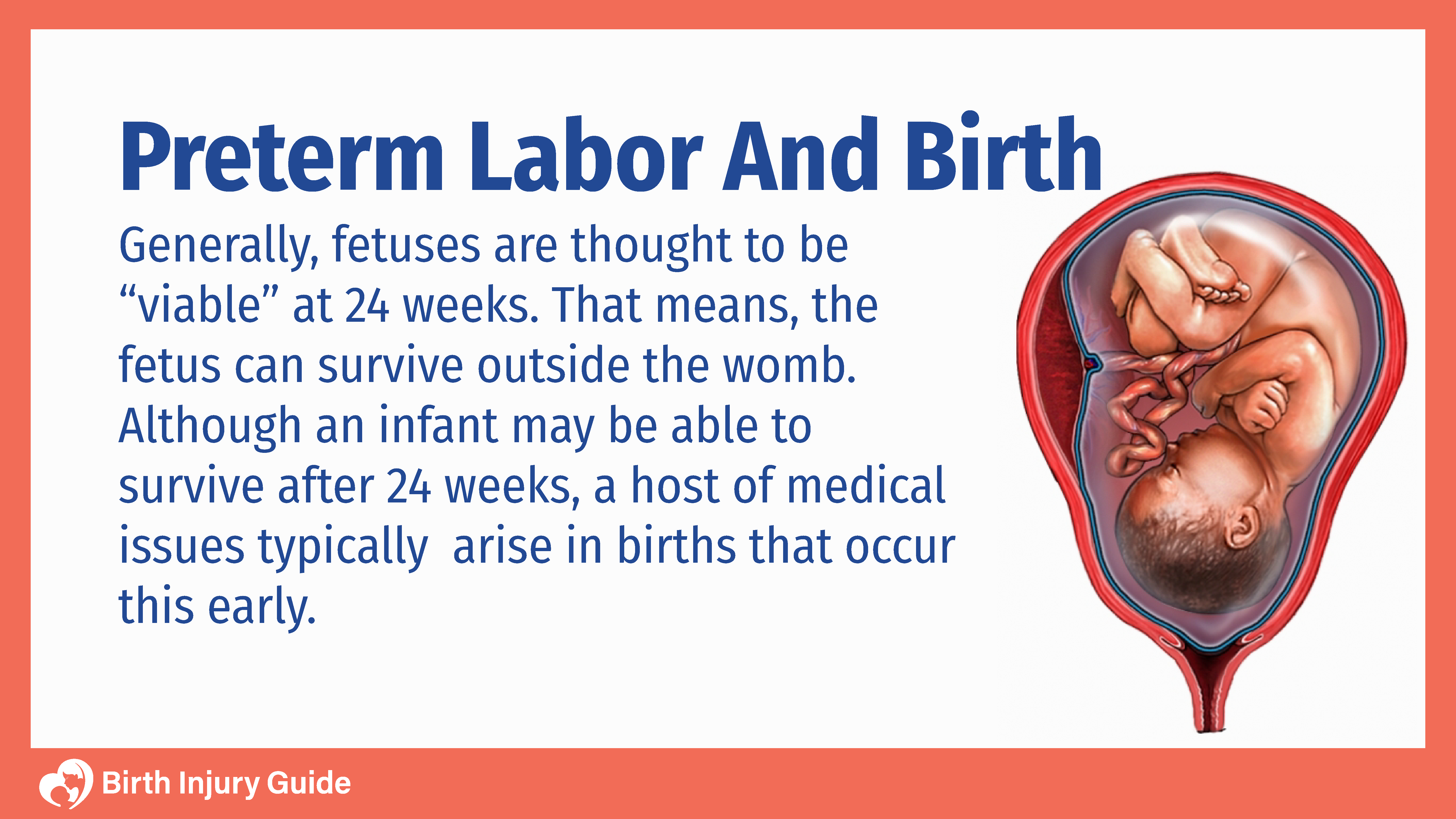
Preterm Labor and Birth
A pregnancy lasts around 37 to 40 weeks to be considered full-term. A woman who goes into labor before the 37th week of pregnancy goes into preterm labor. Preterm labor and birth occur between weeks 20 and 37. Birth that occurs before 20 weeks is considered a miscarriage.

Preterm labor and birth can happen for a number of reasons, many of which can be prevented with the correct medical care.
Symptoms of Preterm Labor
Most women know they’re in preterm labor if regular contractions begin before the 37th week of pregnancy and become more painful and close together as time goes by. However, there are other signs and symptoms that aren’t always as obvious as they can be confused with other forms of pain and issues with pregnancy, including:
- Dull, constant pain in the lower back
- Abdominal cramps
- Rupturing of membranes (water breaking)
- Pelvic pressure
Risk Factors of Preterm Labor and Birth
There are numerous risk factors that may result in preterm labor and birth, yet it’s important to note that not all risk factors will automatically result in early labor and birth. Some of the most common risk factors include:
- Maternal fever of 101 degrees Fahrenheit or more during pregnancy
- Continuous bladder and kidney infections
- Inflammation, bacterial vaginosis and vaginal yeast infections
- High blood pressure
- Diabetes
- Short time period between pregnancies (getting pregnant back-to-back)
- Multiple abortions
- Previous preterm deliveries
- Placental problems, such as placenta previa, placental abruption or ruptured placenta
- Little or no prenatal care
- Failure of physicians to monitor, diagnose, and provide adequate treatment for maternal medical issues
How to Diagnose Preterm Labor
If your doctor suspects preterm labor, he or she will perform a pelvic exam to determine if the cervix is opening. Additionally, you may have a fetal ultrasound to determine the baby’s position, heart rate and movements. In some cases, a fetal fibronectin test is administered, which checks for fibronectin protein in the cervix.
Preterm Labor Treatment
Sometimes preterm labor can be stopped with medications used to hinder contractions, known as tocolytics. Your doctor may also prescribe antibiotics, along with the recommendation of bed rest.
Why Immediate Medical Care is Important
If you have any or a combination of the aforementioned preterm labor symptoms or just have an general uneasy feeling, contact your healthcare provider for further assistance. The only certain way to know for sure if you are in premature labor is to have a physician check your cervix for dilation. Your doctor may also check for ruptured membranes and perform an ultrasound.
Physicians will do what they can to prolong the pregnancy, as the longer an infant is the womb, the better the chances of reducing health problems. If doctors are unable to stop preterm labor, the infant may be at risk of medical issues, including:
- Lung problems (difficulties with breathing)
- Developmental delays
- Behavioral and emotional problems
- Cerebral palsy
- Vision problems
- Gastrointestinal problems
- Hearing loss
- Jaundice
- Death
- Cognitive disabilities
- Anemia
- Intraventricular hemorrhaging
Keep in mind, however, that preterm labor and birth doesn’t always mean that your baby will suffer from birth injuries or defects. It’s always a good idea to take care of yourself during pregnancy. Get plenty of rest and obtain prenatal care as soon as you confirm that you are pregnant in order to reduce any risks.



